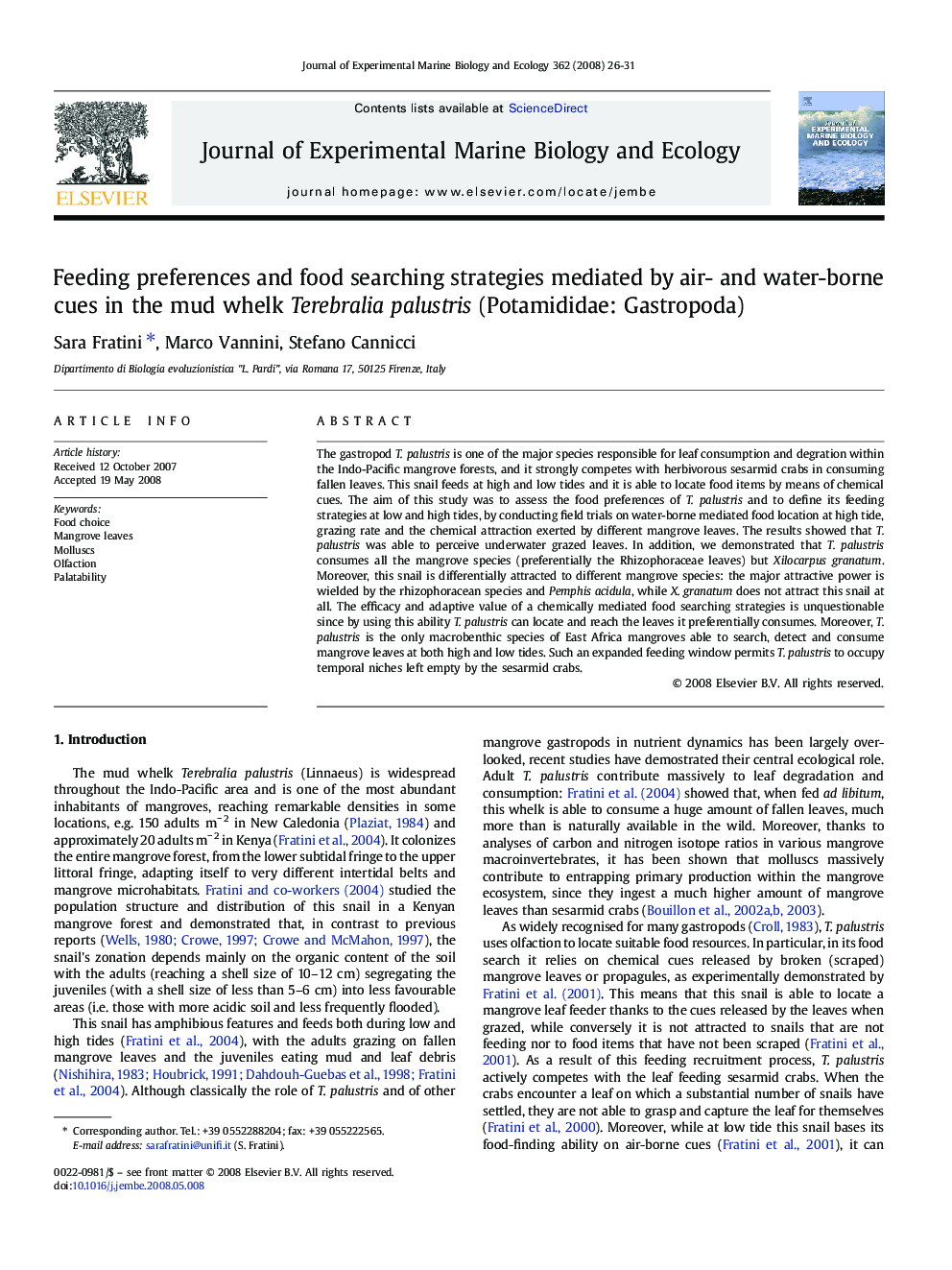| کد مقاله | کد نشریه | سال انتشار | مقاله انگلیسی | نسخه تمام متن |
|---|---|---|---|---|
| 4397293 | 1305877 | 2008 | 6 صفحه PDF | دانلود رایگان |

The gastropod T. palustris is one of the major species responsible for leaf consumption and degration within the Indo-Pacific mangrove forests, and it strongly competes with herbivorous sesarmid crabs in consuming fallen leaves. This snail feeds at high and low tides and it is able to locate food items by means of chemical cues. The aim of this study was to assess the food preferences of T. palustris and to define its feeding strategies at low and high tides, by conducting field trials on water-borne mediated food location at high tide, grazing rate and the chemical attraction exerted by different mangrove leaves. The results showed that T. palustris was able to perceive underwater grazed leaves. In addition, we demonstrated that T. palustris consumes all the mangrove species (preferentially the Rhizophoraceae leaves) but Xilocarpus granatum. Moreover, this snail is differentially attracted to different mangrove species: the major attractive power is wielded by the rhizophoracean species and Pemphis acidula, while X. granatum does not attract this snail at all. The efficacy and adaptive value of a chemically mediated food searching strategies is unquestionable since by using this ability T. palustris can locate and reach the leaves it preferentially consumes. Moreover, T. palustris is the only macrobenthic species of East Africa mangroves able to search, detect and consume mangrove leaves at both high and low tides. Such an expanded feeding window permits T. palustris to occupy temporal niches left empty by the sesarmid crabs.
Journal: Journal of Experimental Marine Biology and Ecology - Volume 362, Issue 1, 18 July 2008, Pages 26–31